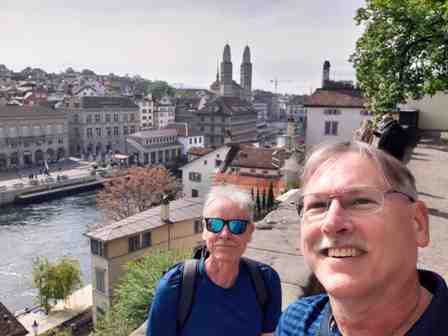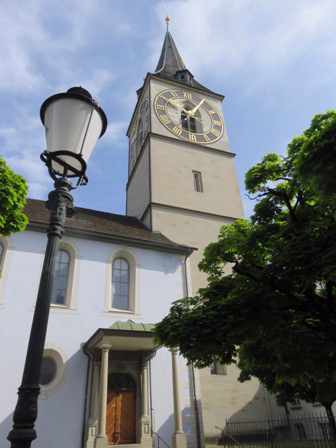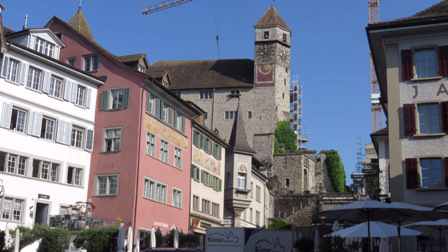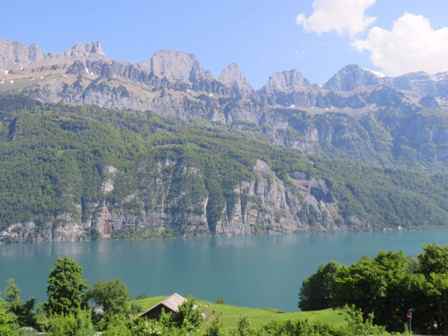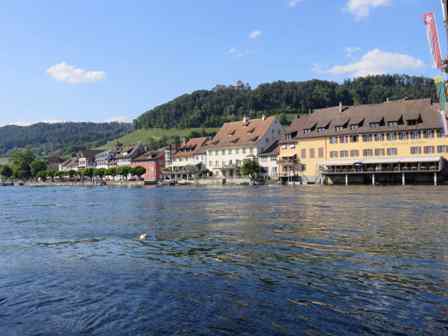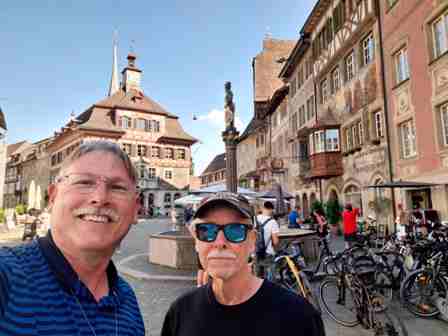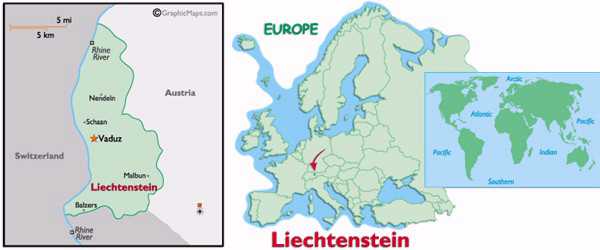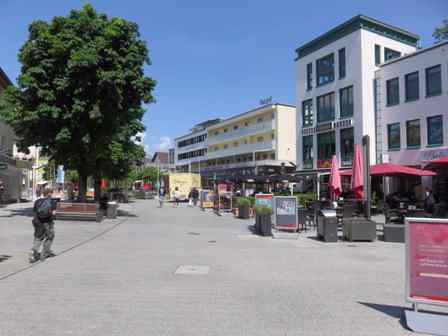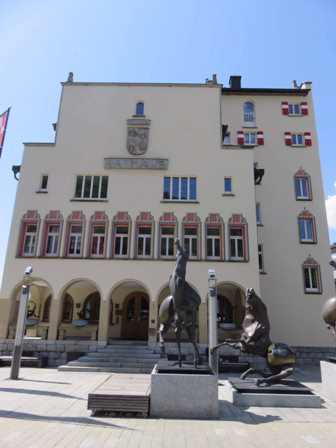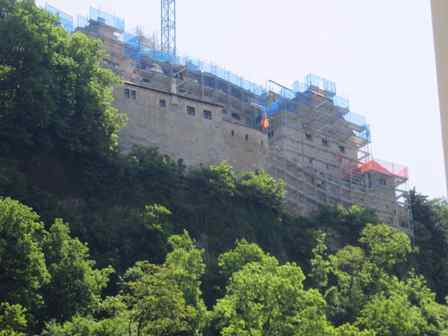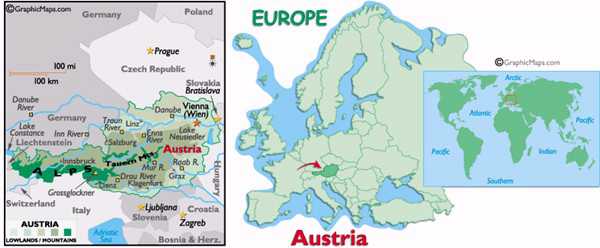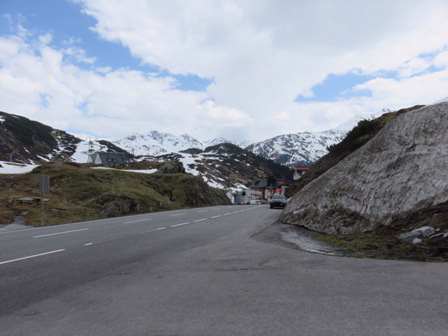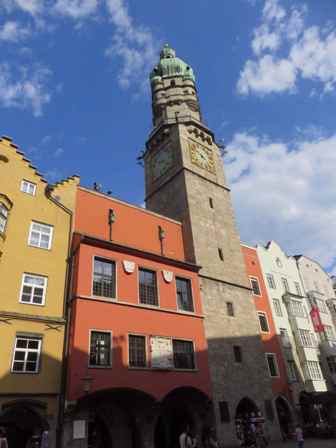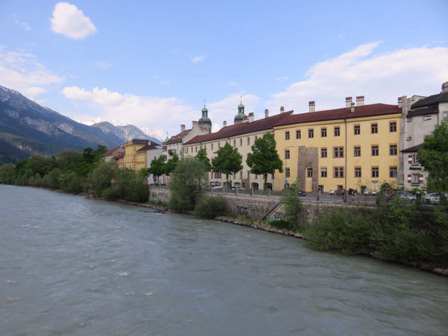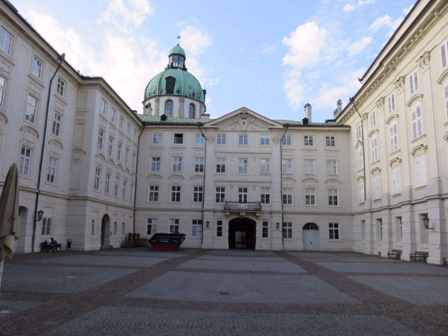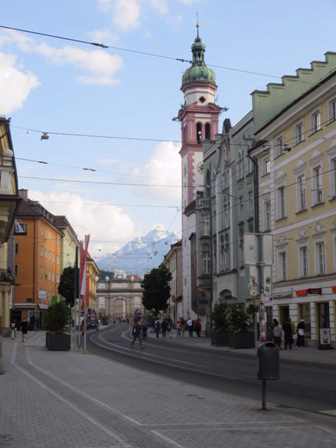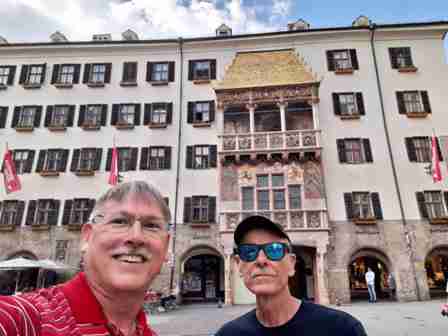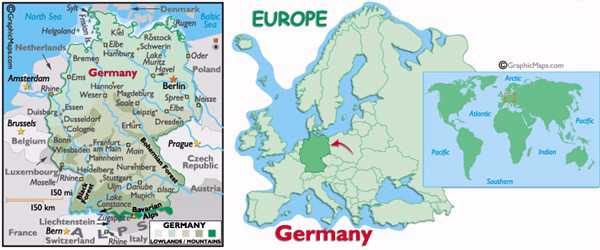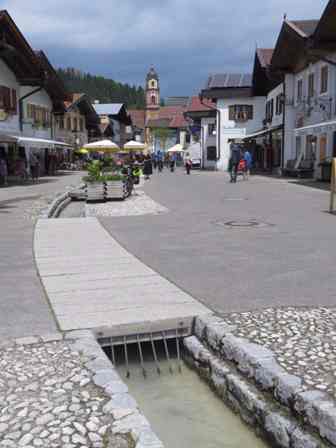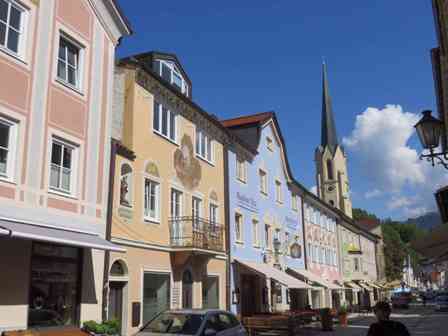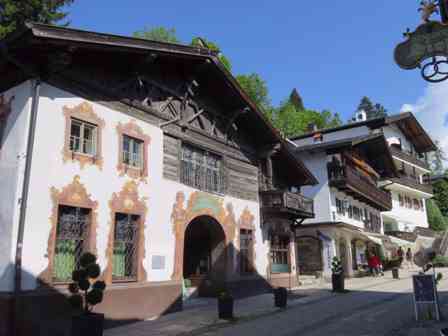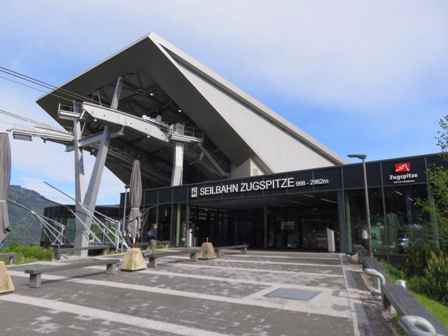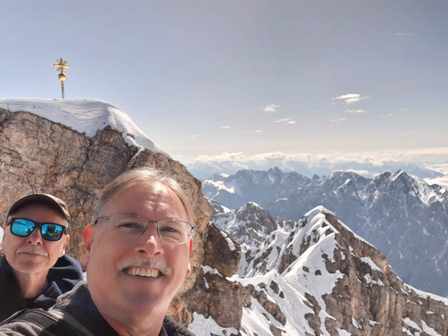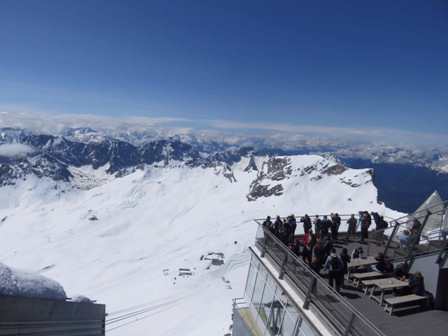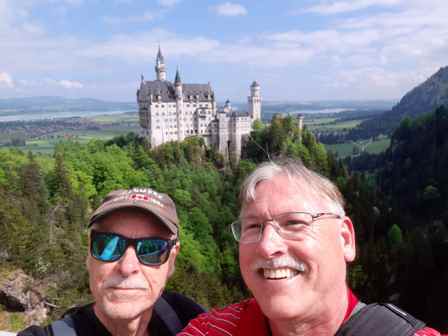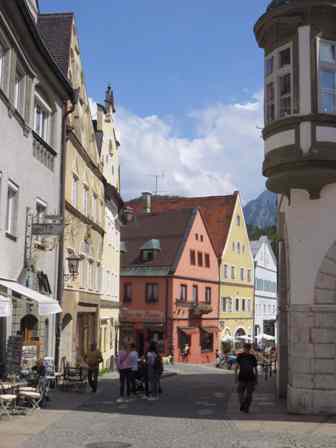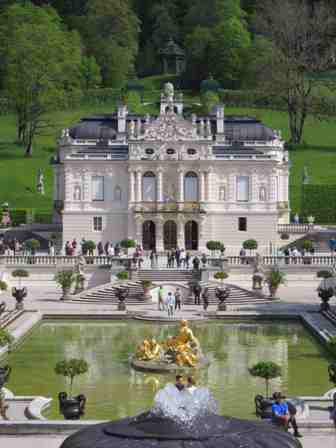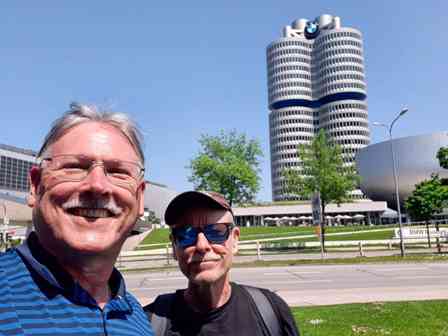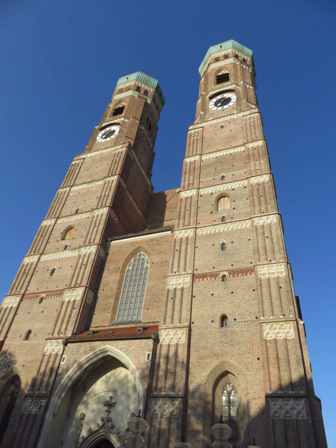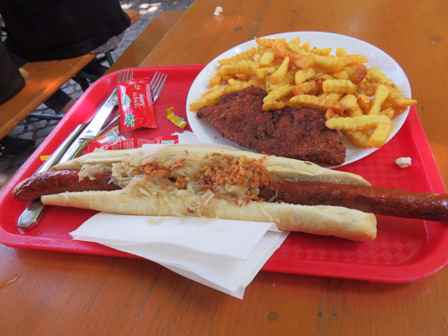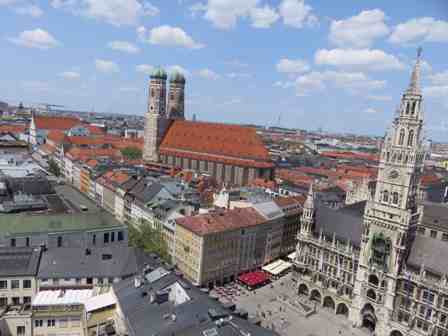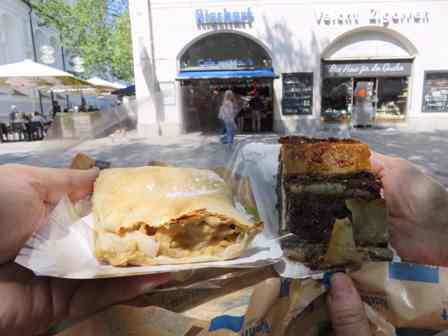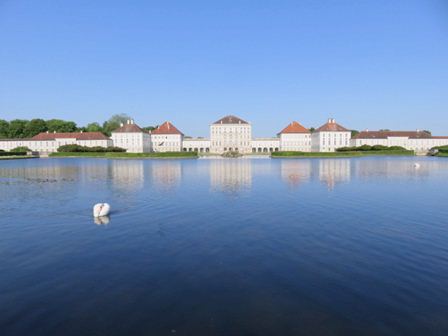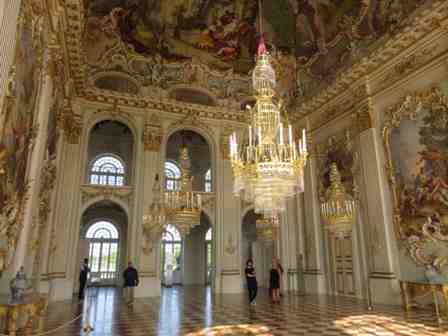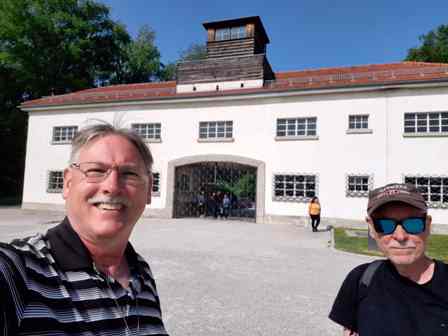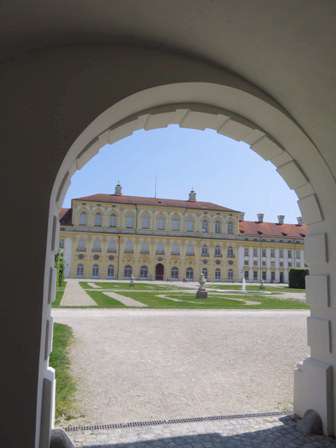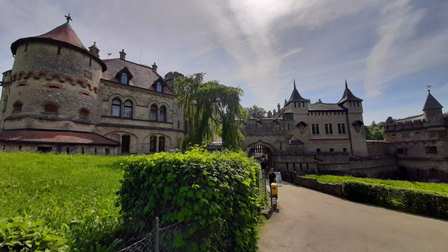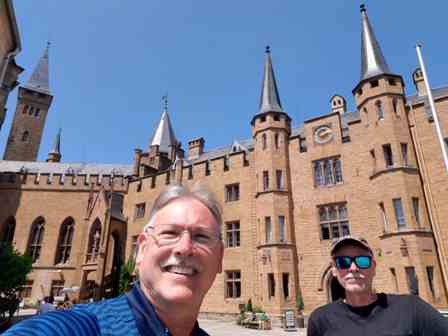In May 2023 my one brother and I flew to Zurich, Switzerland for 2 weeks to drive a loop through northeast Switzerland, all of Liechtenstein, western Austria, and southern Germany.
We got a great airfare price to fly to Zurich, Switzerland using Icelandair. Of course, this meant we had to land in Reykjavik, Iceland to connect to our next flight to Zurich. We had a wonderful time in Iceland, all 40 minutes of it getting from our arrival gate to our departure gate. Once we did finally arrive at the Zurich Flughafen (Airport), it was about a 25-minute tram ride from the airport to our hotel. The #10 tram at the airport was clearly marked, and once we got off our stop in the city center, our hotel was practically in front of us. Since we arrived early afternoon, we dropped off our luggage and packed up what we needed to walk around the city for the rest of the afternoon. We hit one of the main pedestrian streets and walked along the scenic Limmat River, which flows through Zurich. We enjoyed some schnitzel and salad for dinner before walking to the Zurich Hauptbahnhog main train station to see what that had to offer (BTW: mostly shopping).
For our full day in Zurich, we walked to 2 separate observation points high above the city. One was in the Linderhof Park and the other was not only close to our hotel in the Neumarkt (New Market) area of town but also near the University. The nice thing about them was that they were on opposite sides of the Limmat River, so you had 2 completely different perspectives of the city. We also had our fill of several churches. The Augustinekirche was built in the 13th century, but the interior was restored in the 1840s. The Fraumünster is from 853, but had modernization done in the 13th century (if you call that modern) and then again around 1900 (probably running water and lights added). Kirche St. Peter was the most scenic church, built in 1705, it has an 8.7 metre (28 foot) clock face, the largest church clock face in Europe. Zurich is on the tip of the Zürichsee (Lake Zurich), a large body of water with lots of water activities as well as a couple beach areas and lots of boats in the marina. We took a tram (love the trams) after dinner and picked up our rental car at the airport. The plan, get an early start the next day to get away from the city traffic and drive to Liechtenstein and Austria.
After leaving Zurich, we drove to the opposite end of the Zürichsee (Lake Zurich) to the town of Rapperswil, Switzerland. Besides having the lake view, there is also the 13th century Schloss Rapperswil (Castle) high above the town and lake with panorama views. Next stop, the little Principality of Liechtenstein. We had our passports stamped at the tourist office; you just have to do that since it's so cool since only about 75,000 tourists visited Liechtenstein last year. In Vaduz, the capital city, we took the time to have lunch on the main pedestrian street called Städtle (Little Town). There isn't necessarily a lot to do there, but it's some place you go because it's there. Fortunately, we were able to buy an Autobahn pass for Austria before we crossed the border.
I was a little surprised there was no border control between Lichtenstein and Austria. Lichtenstein and Switzerland are not in the EU, but Austria is. We were assuming we pretty much would take the Autobahn all the way to Innsbrook. However, we saw construction signs indicating tunnel closures. Because of this, they detoured us off and took us through some incredibly scenic roads and passes. This turned out to be a good thing. Despite the delay of the detour, we arrived in Innsbruck about mid-afternoon. This gave us some time to see the Innsbruck Alstadt (old town) for the remainder of the day and evening.
It just occurred to me, we had breakfast in Switzerland, lunch in Liechtenstein, and dinner in Austria...
We got a late start leaving Innsbruck, but we were able to see everything we wanted to in the old town center. Lots of old buildings, including the Goldene Dachl (Golden Roof) from 1500, which is considered the city's most famous landmark. Also, the entire city is surrounded by the Alps and you have the Inn River to enjoy. Leaving Innsbruck, we continued driving through the Alps and enjoyed some incredible scenery along the way while driving through some of the passes.
Crossing into Germany was uneventful and we captured a picture at the border. In order to eventually drive in the city of Munich city limits, we knew we had to purchase a German emissions vehicle sticker for our Swiss rental car. We got lucky, and the 2nd petrol station we stopped at spoke enough English to understand what we wanted. Needless to say, the first attempt was erfolglos (unsuccessful). But, now we'll be legal in Munich, but before we get there, we had some other things to see first.
Our next stop was in the town of Mittenwald. It's your classic German village in the Alps with all the traditional Bavarian houses with overflowing flower boxes and painted buildings. I don't believe Disney could do any better. Despite being a prime tourist town, there were no crowds and we had the place to ourselves. We even enjoyed a quiet and delicious lunch in town. Just as we were leaving, a big tour bus pulled up, but we were on our way to our hotel by then.
We stayed at a hotel just outside the town of Garmisch-Partenkirchen and took a bus into the town. At one time this was 2 separate towns that merged together in 1935. Consequently, you have to go to both old towns. They each have their own flair, but Garmisch wins with a little more classic German style while Partenkirchen is a bit more modern. It is very picturesque around the town since it lies near the Zugspitze, Germany's highest peak. At 2,962 metres (9,700 feet), the summit can be accessed by cogwheel train and cable car. As a weird side note, we just saw on the news Tina Turner just died at 83. Oddly, she was living in Switzerland and just a couple days earlier we drove near the town she lived along Lake Zurich.
Speaking of Zugspitze, we made it! We caught a bus just outside our hotel for the short 30-minute ride to the Zugspitze cable car in the town of Eibsee. The cable car takes you to the highest point in Germany, the Zugspitze. As I mentioned, it is 2,962 metres (9,700 feet) high. What I wasn't aware of was that the cable car was record breaking (hopefully not cable breaking). It has the world's highest steel tower for cable cars (127 metres or 416 feet), the world's longest cable span (3,213 metres or 10,541 feet), and the world's greatest height difference between valley and mountain base (1,945 metres or 6,381 feet). Since the tram station was already at 998 metres (3,274 feet), it only took about 8 minutes to get to the top. Then 'on top of that', we were able to walk into Austria at the peak. One part of the mountain peak is in Germany and one part in Austria. They even had special passport stamps we got, so glad we had our passports with us. Way cool! We had a nice warm lunch in the restaurant at the peak in Austria.
We started a trend. We had breakfast in Germany at our hotel, then crossed into Austria at the top of the Zugspitze for lunch. I'll never be able to eat 3 meals in 1 country again, now I know what it's like to be a real jet setter...
You knew it had to happen. We're right here in Bavaria. Neuschwanstein Castle! You know it, it's the castle you always see when they show you 'This is Germany' photos. Although rather modern by German castle standards, it was built by King Ludwig II starting in 1869, it is still a very classical looking castle. From the outside anyway. Since he died in 1886, it was never finished on the inside. Even today, there isn't much interior finished but they provide very short tours of only a couple rooms. Oh, did I mention there's no photography allowed inside? Bummer. Despite this lack of interior, there's a lot of places to walk around the area outside. There's several trails in the surrounding forest area that lead to phenomenal views of the castle and countryside. We spent most of the day doing this. There's also the original castle King Ludwig II built, Hohenschwangau Castle, nearby on the shores of Alpsee (Alp Lake). Not quite the eye grabber, but still nice with a style of its own. Later in the afternoon we drove to the nearby town of Füssen. We walked around the nice pedestrian old town and castle, then had some ice cream...
Nothing could top the incredible Neuschwanstein Castle, but we ventured on with a visit to yet another King Ludwig II's palace, Linderhof. It's about a 45-minute drive away and on the way to Munich. This was formally his family's hunting grounds where his father had originally built a modest hunting lodge. Ludwig took it up to an extreme and built a real palace (not as large or extravagant as Neuschwanstein, but nice). We took a tour of the incredible inside, decorated with nothing but extravagance.
Then on to Munich! First stop, the BMW Museum. They had a lot of cars, motorcycles, and the history of BMW vehicles. Since it's the 100th anniversary of BMW motorcycles, they had a special motorcycle exhibit. Very cool... We then drove into Munich, stopped at our hotel, took a tram to the city centre, walked around and had dinner before returning back to our hotel.
We drove to Dachau concentration camp just about 30 minutes north of Munich. It was in use from 1933 to 1945 and like most concentration camps, much of the camp was destroyed or torn down. Surprisingly, the crematorium building stands along with quite a few administrative buildings. The gate is reconstructed along with several Holocaust victim barracks. Then it was onto the nearby town of Oberschleißheim, which actually has 3 palaces. Yes it's a long town name, but the 3 palaces are all connected in a very long garden with water fountains and walking paths through the surrounding woods. The Old Palace was finished in 1623, the New Palace in 1726, and the Lustheim Palace (hunting lodge) in 1688. There were lots of walking paths around the palaces in a serene woodsy setting.
Breaking news: When we went into Munich centre the day we arrived, it was a mad house. We just learned the Munich FC Bayern (Fußall Club) won its 11th straight Bundesliga title yesterday. OK, doesn't mean much to me either, but the Munchkins (is that what you call people from Munich?) are happy.
There have been some trips where I have seen a lot of castles, this trip has a lot of palaces. Literally just down the road, in the opposite direction of Munich centre from our hotel, was Nymphenburg Palace. It was completed in 1675 and at 632 metres (2,073 feet) is even wider than the Palace of Versailles. The Nymphenburg Palace served as the main summer residence for the former rulers of Bavaria of the House of Wittelsbach. It sits on a garden that is over 490 acres. We spent the morning taking the tour and walking the vast gardens. We then spent the remainder of the day in Munich, fortunately a lot less crowded the day after the fußall celebration. We were even able to see the Rathaus (City Hall) clock tower Glockenspiel at Noon when it has a series of dancing figures. After the Glockenspiel show at Noon, we had bratwurst and schnitzel in the Viktualienmarkt (Food Market), a food market in old town Munich that has been going since 1807. But I'm sure our lunch was fresher than that. We then spent the remainder of the day strolling around Munich.
Since our time was winding down, we had to drive back to Zurich from Munich, about 350 kilometers (220 miles) to catch our flight back home. Doesn't seem like much, but in Europe that can take a while when not on the Autobahn. Since we had a couple more things to see, we were limited to our Autobahn time but enjoyed some nice back roads.
While still in Germany, we found 2 more castles to see south of Stuttgart. Lichtenstein Castle (not associated with the Principality of Liechtenstein - different spelling) was built in 1842. It hangs high above a valley on the cliff edge, and has many turrets. The other castle, not far away was Hohenzollern Castle built in 1461. It is elevated 855 metres (2,805 feet) above the surrounding plain. Like Lichtenstein Castle, it can also be seen for miles. Surprisingly, I think Hohenzollern Castle is almost as dramatic as Neuschwanstein, but without the crowds or tourists. Almost, as dramatic, but not quite.
We then crossed back into Switzerland late in the afternoon at the incredibly beautiful town of Stein am Rhein. As implied by the name, it is along the Rhein River. It has an old town with many buildings from the 1400s to 1700s, very traditional. We then drove to Zurich and returned our rental car. We knew we had things to see the last day with our rental car, so we intentionally planned on dropping the car off late and then staying at a hotel near the Zurich airport. We had a very full last day.
Time to fly home. We stayed so close to the airport; we walked to the terminal from our hotel. We had a connecting flight on the way home through Reykjavik, Iceland. This is the same as coming here, we only had about an hour layover to connect. We saw lots of castles, palaces, mountains, and beautiful scenery during this trip as we drove through parts of Switzerland, Austria, and Germany and drove through all of Liechtenstein. Back to Europe. Great trip!
BTW: Made it back home, well, almost. There were loads of people at customs and passport control, and that took about 2 1/2 hours (which was really unusually long). Then we had trouble getting our scheduled taxi to pick us up. After we contacted them, we waited for the taxi, then called them back after about 45 minutes, they said they had canceled the cab (no reason why). Then we had to wait another 25 minutes for the next cab to finally arrive. Finally, made it back home...


